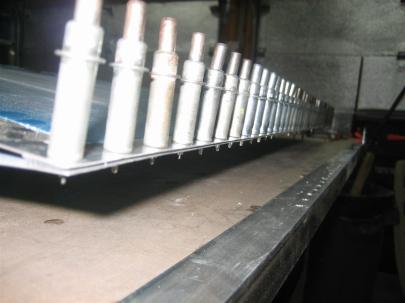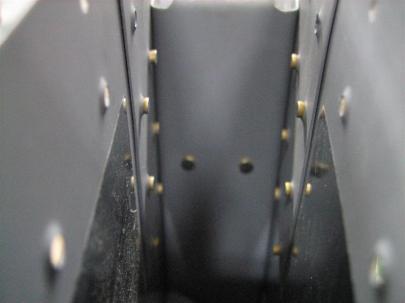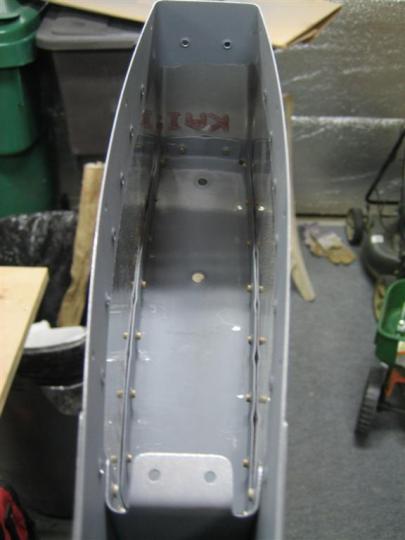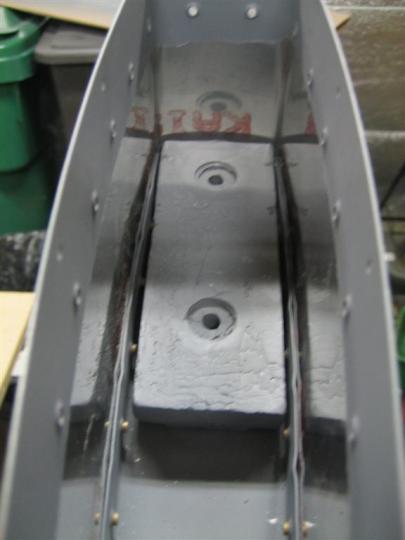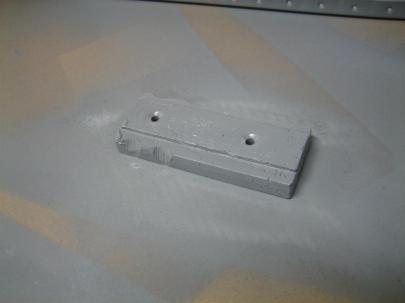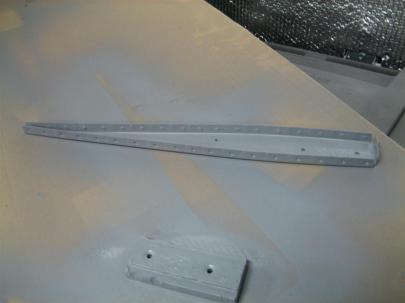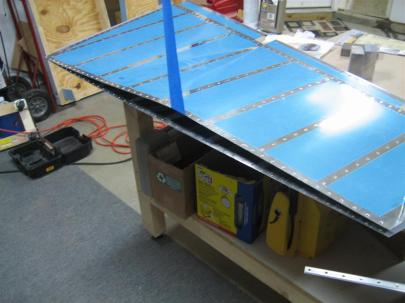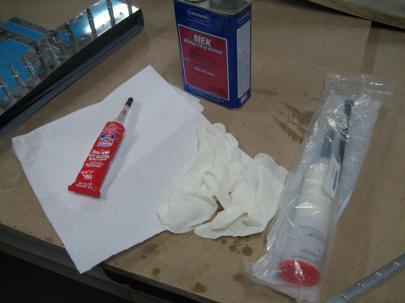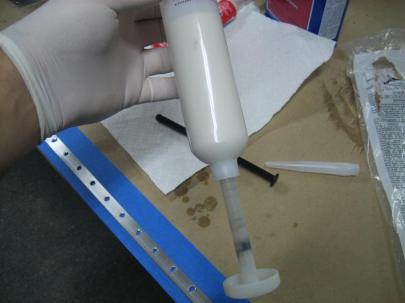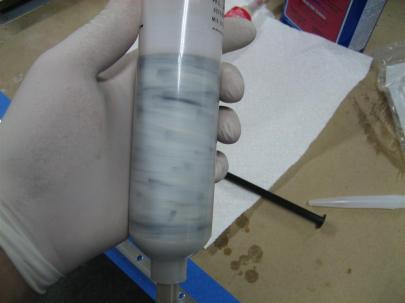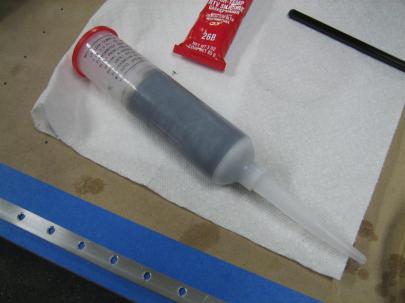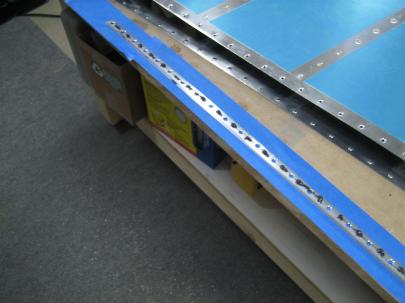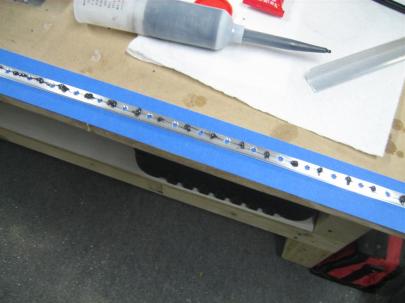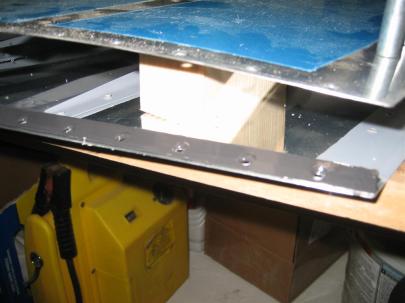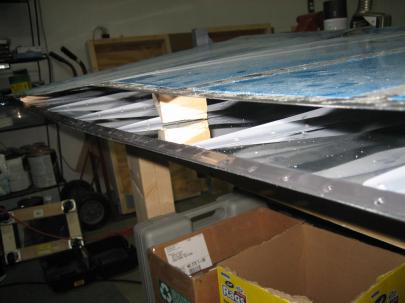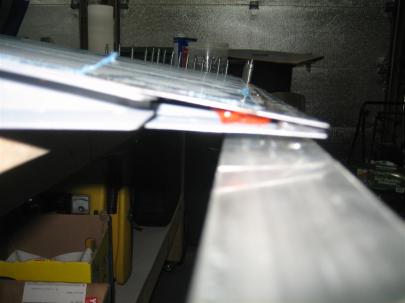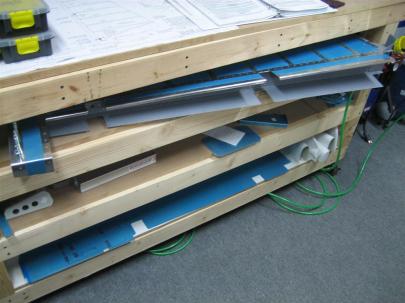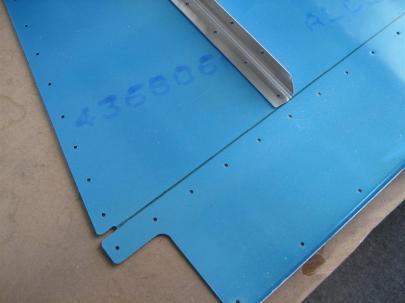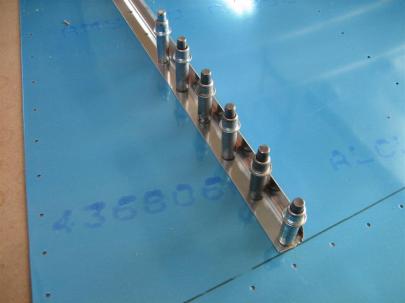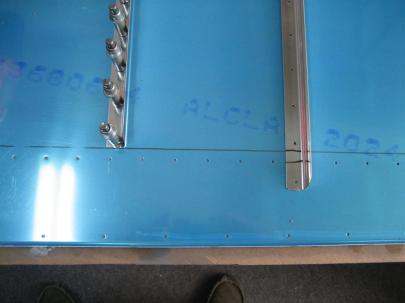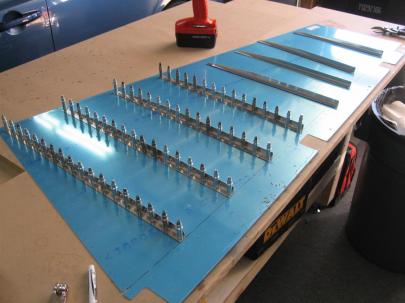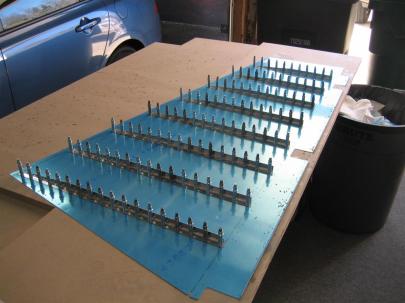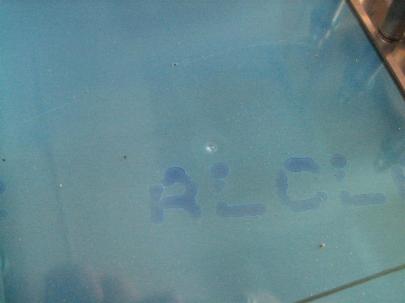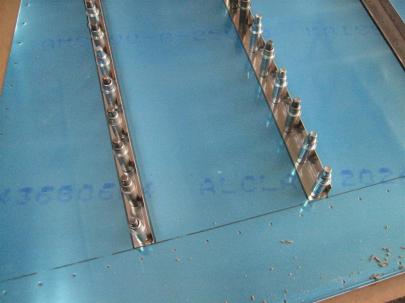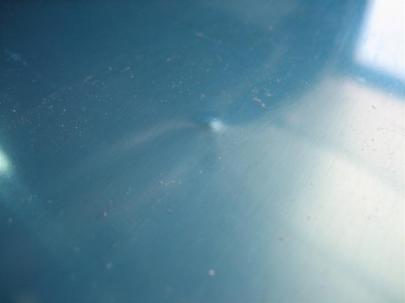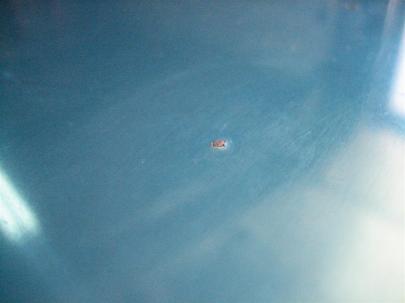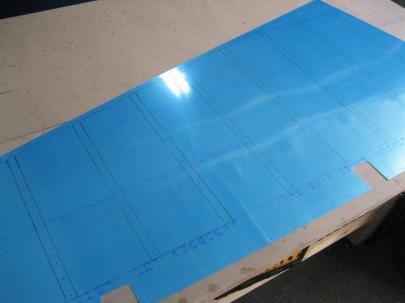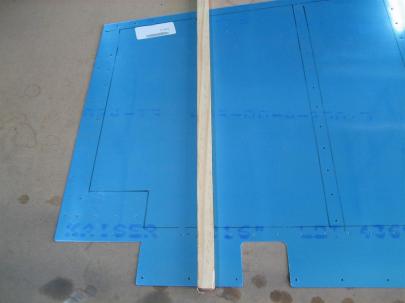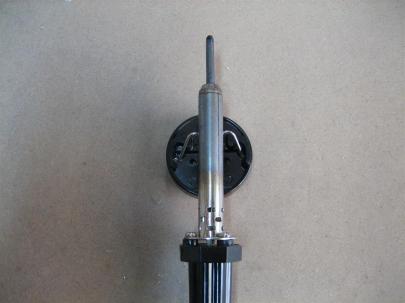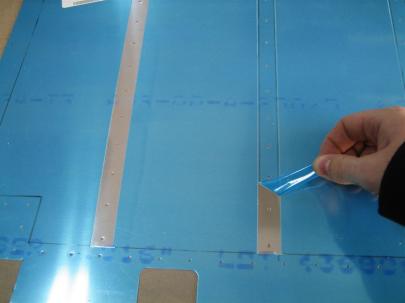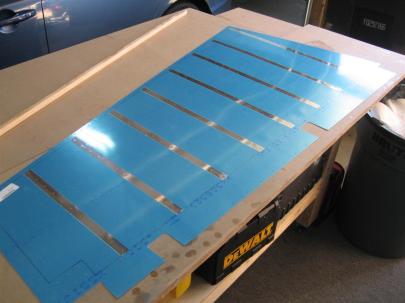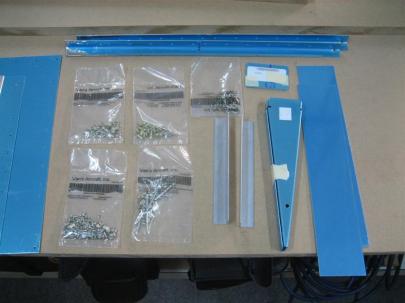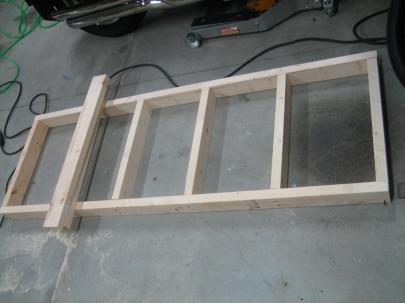A few days ago I had the circular saw out, and I saw (pun intended) a 16″ wide piece of 3/4″ MDF sitting around, so I took a quick look at the plans, and decided that 16″ x 16″ might be a good starting point for the leading edge/tank assembly cradle.
The plans (second picture down) show 13″ x 15″, but I’ve heard that some people break the cradle at the thinnest point.
Anyway, it took me all of 30 seconds to cut the 2 big square pieces and the four triangular pieces also pictured.
Tonight, I pulled those out for assembly (a quick night in the shop).

I used a thick magic marker to offest from a tank rib (room for pipe-insulation to protect the skins).
After both were cut out with the jigsaw, I laid (layed? Em, help me out here) the tank rib into the cutout to make sure I had offset the cuts enough.
So, here’s an expplanation of my “alternate route”.
Because Van’s specifically states that this just helps in assembly, and is not an alignment jig, I decided I didn’t really need to take up a lot of space with a 3 foot wide cradle that would undoubtedly get in the way. Instead, I am making the two halves of the cradle independently, and will use them (approximately 3 feet apart). I also figured they would be stable enough with one of these triangular pieces on each side, which they were.
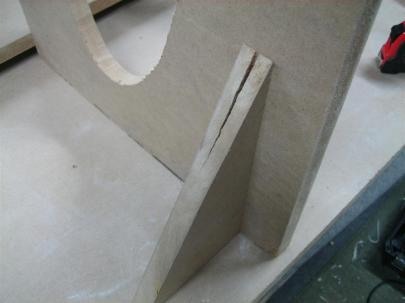
I predrilled the cradle, but not the gusset, and it cracked as I assembled with some coarse-thread drywall screws. Bummer (I never thought I would put a picture of my crack on the internet.)
After everything was all said and done, I am pretty happy with them (damn crack!).
Then, I looked around for something I could get done with the half hour of attention and “eyelids-open” time I felt I had left.
I shot a quick coat of primer on the right tiedown bracket (and spacers), and then waited for the first sides to dry before flipping them over and hitting the other side.
While the whole thing dried, I needed something else to do, so I grabbed the T-715 Anti-Rotation brackets (which come all connected like the old plastic models used to. Remember you had to use a pocket knife to cut off the little tabs after bending and twisting one model piece from the rest of the pieces.)
Anyway, after getting them apart, I edge finished all four on the scotchbrite wheel. Maybe 10 minutes, and for the record, I am going to log this time under Spars, because I’m waiting for the tiedown brackets to dry. I don’t feel like adding an entry under tanks just yet.
When it is years and years from now, and you ask me how my hours it took me to finish my tanks, and I say “xx hours,” remember to add 10 minutes to that to get the real answer.
Okay, now that the tiedown bracket is dry, let’s find those AN426AD3-7s – HOLY CRAP THESE THINGS ARE LOOOONG!
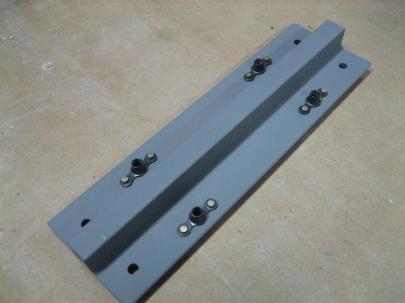
Tada! (That's three "tada"s today. Aren't you lucky!?) Don't forget the nutplates on the other side. I almost did.
Oh, and by the way. Don’t prime and then wait 10 minutes for things to dry, the primer really hasn’t cured, and it will scrape off with a fingernail. After waiting 24 hours, or better yet, a few days, this stuff gets rock solid. I need to remember that.
I shot another coat on these after they were riveted. I was too ashamed of the first coat to take a picture. Sorry.
8 rivets and 1 hour. 0.5 in “Wing” and 0.5 in “Spars.” (I’ll put the log in both places. We’ll see how that works.)
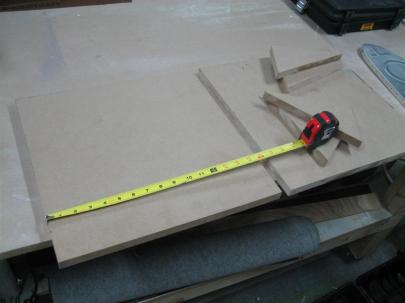
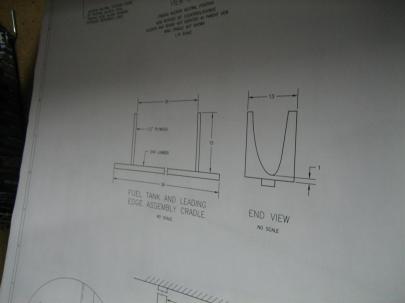
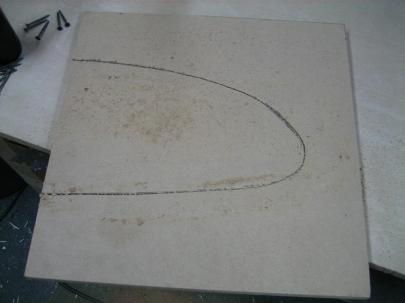
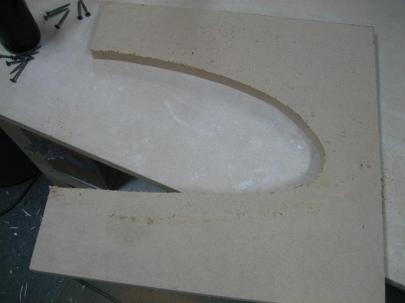

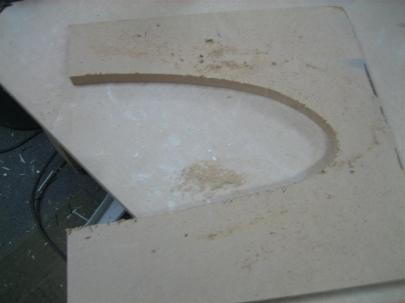
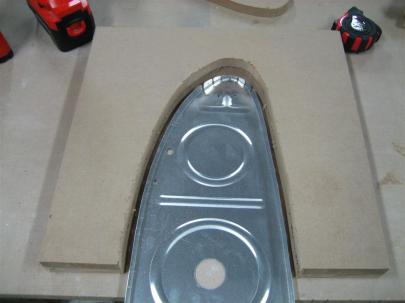
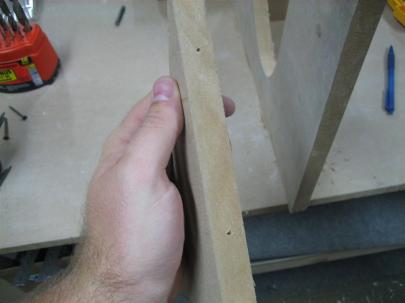
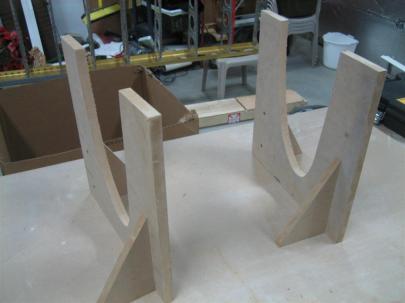
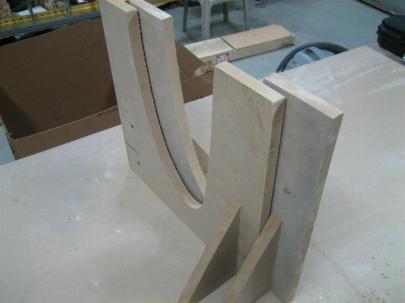
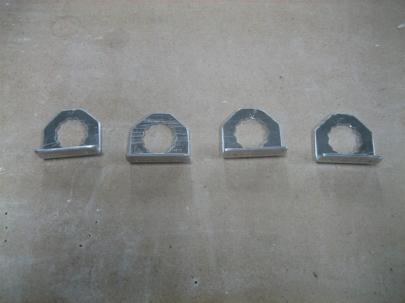
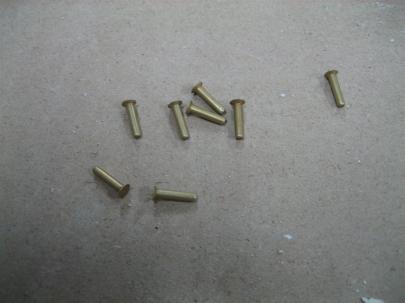
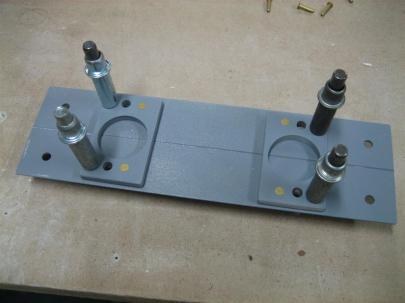



 Posted by Andrew
Posted by Andrew 
















